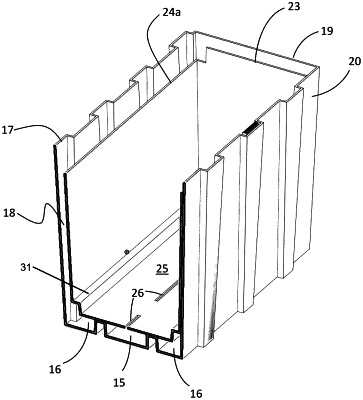| CPC H05K 7/20272 (2013.01) [G06F 1/20 (2013.01); H05K 7/20236 (2013.01); H01L 23/44 (2013.01)] | 20 Claims |

|
1. An immersion-cooling apparatus, comprising:
a tank having a bottom and one or more walls at least partially enclosing a first interior volume;
a liner disposed within the first interior volume of the tank, the liner having an exterior surface and a second interior volume configured to house an object therein;
an inflow channel defined within the first interior volume of the tank;
an inlet fluidly coupled to the tank, wherein the inlet is in fluid communication with the inflow channel, thereby enabling a dielectric liquid from a source external to the tank to enter into the inflow channel via the inlet;
a vent aperture disposed within the liner, wherein the vent aperture is in fluid communication with the inflow channel, thereby enabling the dielectric liquid to enter into the second interior volume of the liner via the vent aperture, wherein the object positioned within the second interior volume of the liner becomes immersed into the dielectric liquid, thereby enabling heat transfer between the object and the dielectric liquid;
a down-flow channel defined within a first corrugation within a space between the exterior surface of the liner and an interior surface of the tank, wherein the dielectric liquid is configured to enter into the down-flow channel upon exiting the second interior volume of the liner;
an outflow channel in fluid communication with the down-flow channel, wherein the outflow channel is defined within the interior volume of the tank and is external to the liner; and
an outlet fluidly coupled to the tank, wherein the outlet is in fluid communication with the outflow channel, thereby enabling the dielectric liquid to exit the first interior volume of the tank via the outlet.
|